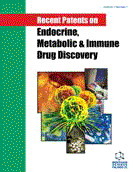Abstract
Osteoporosis is a major public health problem affecting all countries and giving rise to fractures. The World Health Organization (WHO) published a set of diagnostic criteria to define osteoporosis in postmenopausal Caucasian women, using bone mineral density (BMD) values measured by dual energy X-ray absorptiometry (DXA). Currently, measurement of BMD by DXA (g/cm2) has been the standard method for diagnosing osteoporosis, in addition to assessing fracture risk and therapeutic effects. Quantitative computed tomography (QCT) can quantify volumetric BMD (mg/cm3), and cancellous bone can be measured independently of surrounding cortical bone and aortic calcification. Recently, quantitative ultrasound (QUS) is emerging as a relatively low-cost and readily accessible alternative means to identify osteoporosis and evaluate fracture risk. More recently, finite element (FE) method based on data from computed tomography (CT) has been used to assess bone strength, fracture risk, and therapeutic effects on osteoporosis. In this review, recent patents and methods for assessing bone mineral density, bone strength, fracture risk and therapeutic effects on osteoporosis are outlined.
Keywords: Osteoporosis, elderly women, bone mineral density, bone strength, vertebral fracture, hip fracture, dual energy X-ray absorptiometry, quantitative computed tomography, quantitative ultrasound, finite element analysis
 17
17





















